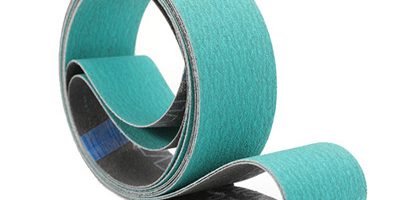Sanding is a crucial step in many woodworking and metalworking projects, and selecting the right sanding belt can make all the difference in achieving a smooth, professional finish. In this blog post, we’ll delve into the art of choosing the perfect sanding belt for your specific project.
Understanding Grit Size: The first consideration when choosing a sanding belt is the grit size. Grit size determines how coarse or fine the abrasive material is. Lower grit numbers like 40 or 60 are best suited for heavy material removal, while higher grits like 120 or 240 are ideal for finishing touches. Understanding your project’s requirements is key.
Belt Material: Sanding belts are made from various materials, including aluminum oxide, zirconia alumina, and ceramic. Each material has its own unique properties, such as durability and heat resistance. Ensure you choose a belt material that can handle the demands of your task.
Size and Compatibility: Sanding belts come in different sizes to fit various sanders. Make sure the belt you select is compatible with your sander’s specifications. A mismatch can lead to inefficient sanding and potential damage.
Backing Material: The backing material of a sanding belt can affect its performance. Cloth backings are flexible and best for contour sanding, while paper backings are more rigid and suited for flat surfaces.
Conclusion: Choosing the right sanding belt requires careful consideration of grit size, belt material, size, compatibility, and backing material. By understanding these factors, you can ensure your project achieves a flawless finish. Invest time in selecting the appropriate sanding belt, and your woodworking or metalworking endeavors will yield impressive results.










